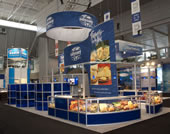
Word on the Street by Kevin Carty
Ten Reasons I’m Glad It’s 2010
Happy New Year! I hope you had a joyous and safe celebration with your family and friends.
I don’t know about you, but I am not a big one for New Year’s Resolutions. Nothing against those of you who do make resolutions, but mine are usually broken by January 4.
I am, however, very hopeful and excited as we step into 2010.
10 Reasons:
#1 – As mentioned by several people at the EDPA Conference in December, 2009 sucked! It can go nowhere but up from here. 🙂
#2 – As an industry, we seem more united than ever. That might sound strange to some, but with the advent of social media sites like LinkedIn, people seem to have an avenue to express concerns, issues, and successes more readily. And they are using it! If you follow the groups and discussions, you see that for the most part we all have the same goals to improve our industry. Even some of the most traditionally “taboo” topics are being discussed. Keep it up. Whether we agree or not is not really important . . . rather, what’s important is keeping the issues out in the open for discussion, learning, and change.
#3 – As a company, Classic Exhibits Inc. has deepened its relationships with customers throughout the tough times of 2009. Sometimes, when the going gets tough it causes strains on relationships. Last year, it proved to bond us together even tighter. When you are all in the same boat together, you might as well join together and find creative ways to trudge through it, making sure we all survive!
#4 – Product Development. Ours actually grew in 2009 and is poised and ready for 2010. We created several new products in 2009 — some that were entirely new, such as Sacagawea, as well as a bevy of new kits within our existing product lines such as Magellan Miracle and Magellan MOR.
#5 – New Products. As you will soon see, we are launching a new line in early 2010 (Segue). Stay tuned as we lauch this product in stages.
#6 – Classic’s Production Team. Many of you have heard me brag about our Production staff. They are incredible. Most of our core production employees celebrated their 10th year with Classic this past year. Ten Years! While I think that says a lot about Classic as company, more importantly, it gives me great comfort knowing that day in and day out that we have a crew of professional, dedicated, and quality-driven individuals producing our customer’s exhibits.
#7 – Shared Knowledge. We focused all year on collecting and collating important details of exhibits sold in the past as well as all exhibits sold in 2009. In return, if you look at Exhibit Design Search, you will see the benefits. Many of the kits shown now include links to the Set-ups, Graphic Dimensions, Set-up Videos, Photos, and much much more!
#8 – Rentals, Rentals, Rentals! Jim Shelman and his team continue to do an amazing job creating unique rental options that provide something for everyone and for every budget!
#9 – ClassicMODUL Connecticut Location. With a year under our belt (and a few bumps and bruises along the way), we are poised to service all your East Coast raw metal needs. Thanks to Tom Jones and his team for their continued dedication to refining this operation.
#10 – Customer Service and Project Management. Tim Hanley and our talented project managers spent their free time throughout 2009 focused on the “Shared Knowledge” theme. They worked on creating databases of CAD drawings, set-up instructions, and other details that will allow us to meet your day-to-day needs more efficiently.
In about two weeks I will release my annual State of the Company letter. It will highlight our plans and goals for 2010, reflect back on the lessons learned from 2009, and chart our plan of attack for 2010 from all levels — Production, Design, Customer Service, Marketing, and Sales.
What are you thoughts as we move into 2010? I would appreciate hearing your insights.
Have a safe and restful weekend!
–Kevin Carty
http://twitter.com/kevin_carty
http://www.linkedin.com/pub/kevin-carty/3/800/32a









